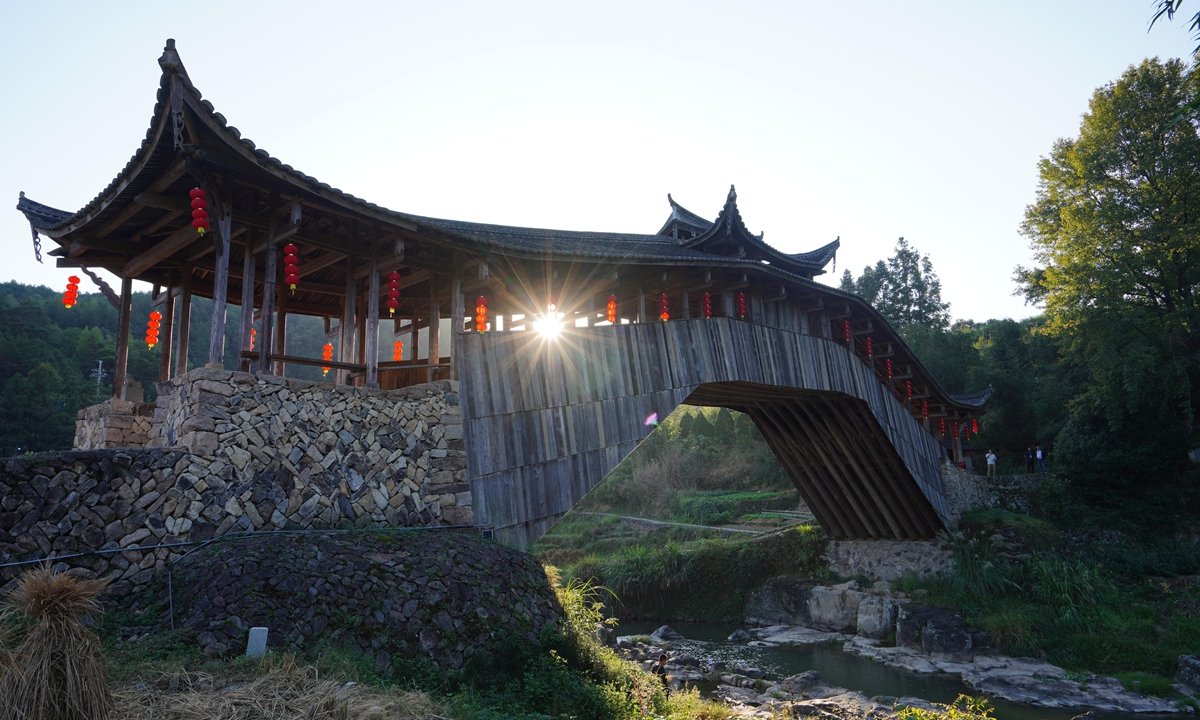China’s rich architectural legacy shines through its lang qiao or corridor bridges, which harmoniously meld traditional culture and natural scenery. Efforts to ensure the inheritance of this unique heritage are being amplified by collaborative initiatives spanning across provinces and the adoption of advanced technology.
A recent initiative spearheaded by the National Cultural Heritage Administration convened a significant roundtable in Taishun, situated in East China’s Zhejiang Province. The agenda centered on actualizing the objectives outlined in the Three-Year Action Plan for the Protection of Covered Bridges, released earlier in May. The key focus was to chart out methodologies to systematically enhance both the preservation and utility of these architectural gems.
China’s ancient bridges predominantly feature stone arches and slabs. However, nestled among these are the relatively rarer corridor bridges, characterized by their integration of buildings or corridors. These architectural wonders, with a lineage tracing back over two millennia, stand as poignant reminders of China’s cultural and historical tapestry. Meticulously crafted to complement the adjacent mountains, waters, and bucolic settings, corridor bridges serve as conduits for the local community’s social interactions and bearers of deep-rooted cultural norms.
Currently, among the nation’s eminent cultural relics, as many as 138 corridor bridges grace 13 provinces and autonomous regions. Taishun, in particular, takes pride in hosting a multitude of these bridges, with 32 ancient corridor bridges, 15 of which enjoy the status of national key cultural relics. The Beijian Bridge in Sixi Town, Taishun, often acclaimed as the quintessential corridor bridge in terms of beauty, is a testament to the region’s architectural heritage.
The impending action plan outlines comprehensive steps. It proposes an exhaustive survey of corridor bridges, streamlining the cultural relics protection framework tailored for these structures, enhancing the ambience around the bridges, and most critically, elevating measures for risk mitigation and swift crisis response.
Guan Qiang, the deputy director of the National Cultural Heritage Administration, voiced a poignant thought at the meeting. He emphasized not just the functional aspect of the corridor bridges but underscored the importance of appreciating and conveying the profound cultural significance embedded within them.
The gathering witnessed a melding of minds, with experts and representatives from provinces like Fujian, Guangdong, and Zhejiang sharing their insights on the preservation of corridor bridges.
The roadmap, unveiled in May, was a collective endeavor of the Publicity Department of the Communist Party of China Central Committee, the Ministry of Culture and Tourism, and the National Cultural Heritage Administration. The set objectives spanning the next three years encapsulate comprehensive surveys, risk assessment development, launch of dedicated preservation projects, and fostering a skilled team committed to perpetuating this iconic culture.
READ MORE:
